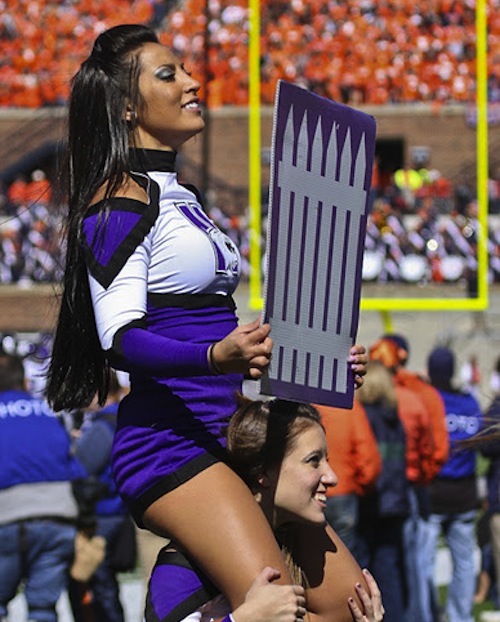
Notwithstanding the fact that the decision may be appealed and, as well, open the door to other college athletes maintaining that they too should be permitted to unionize, on Wednesday, the Chicago region of the National Labor Relations Board ruled that football players at Northwestern University are eligible to unionize since they are, according to the NLRB, “employees” under the Act.
While this ruling only applies to Northwestern University’s football program for now, if other colleges operate the same way, it may apply to all similarly structured programs as well.
As a result, in addition to opening a Pandora’s box for colleges across the country, the NLRB’s rationale in ruling that the players are “employees” centered on several points [emphasis added below] and, as well, may have provided a contingency plan in the eventuality that there will be unionized college sports:
- “…it cannot be said the Employer’s scholarship players are “primarily students.” The players spend 50 to 60 hours per week on their football duties during a one-month training camp prior to the start of the academic year and an additional 40 to 50 hours per week on those duties during the three or four month football season. Not only is this more hours than many undisputed full-time employees work at their jobs,it is also many more hours than the players spend on their studies. In fact, the players do not attend academic classes while in training camp or the first few weeks of the regular season. After the academic year begins, the players still continue to devote 40 to 50 hours per week on football-related activities while only spending about 20 hours per week attending classes…it cannot be said that they are ‘primarily students’ who ‘spend only a limited number of hours performing their athletic duties.'” [p. 18]
- “The fact that the players undoubtedly learn great life lessons from participating on the football team and take with them important values such as character, dedication, perseverance, and team work, is insufficient to show that their relationship with the Employer is primarily an academic one. Indeed, as already discussed above, this relationship is an economic one that involves the transfer of great sums of money to the players in the form of scholarships. The Employer expends between $61,000 and $76,000 per scholarship per year or in other words over five million dollars per year for the 85 scholarships.” [p. 19]
- “…football coaches, who are not members of the academic faculty, are responsible for supervising the players’ athletic duties. This critical distinction certainly lessens any concern that imposing collective bargaining would have a “deleterious impact on overall educational decisions” by the Employer’s academic faculty. While it is true that the Employer’s administration does play a role in determining whether to cancel a scholarship, Fitzgerald’s recommendation has been followed in the two instances where this has happened. Accordingly, the players’lack of a relationship with the faculty when performing their athletic duties militates against a finding that they are merely students.” [p. 19]
- “…the facts here show that the Employer never offer a scholarship to a prospective student unless they intend to provide an athletic service to the Employer. In fact, the players can have their scholarships immediately canceled if they voluntarily withdraw from the football team. Even players who are not starters and consequently do not play in any games, must still attend all of the practices, workouts, and meetings as a condition of retaining their scholarship. In contrast to scholarships, need-based financial aid that walk-ons (and other regular students) receive is not provided in exchange for any type of service to theEmployer. For this reason, the walk-ons are free to quit the team at any time without losing their financial aid.” [p. 20]
- “…given the substantial length of the players’ employment it is clear that they cannot be found to be temporary employees under Board law.” [p 22]
In addition to ruling that the scholarship players are employees, the NLRB ruled that the “walk-on” players are not and, therefore, would not be part of the voting (bargaining) unit.
- “…the Employer contends that the “only” difference between the two groups is that the scholarship players receive compensation for their athletic services. The receipt of this compensation in and of itself is a substantial difference in whatever community of interests exists between the two groups. Fundamentally, walk-on players do not share the significant threat of possibly losing up to the equivalent of a quarter million dollars in scholarship if they stop playing football for the Employer as do the scholarship players.”
Now, it would appear that, since the NLRB has ruled that only scholarship players can unionize (and not “walk-on” players), the question then becomes:
What would stop the “employer” from using the walk-on players as a contingent workforce if the union ever decides to call a strike?
After all, since a union’s primary economic weapon is its ability to strike (which has occurred in professional sports on numerous occasions), by the NLRB’s bifurcating the team and excluding the “walk-on” players in the unit, the NLRB seems to have provided the employer with a ready-made contingent workforce if unionized players ever do call a strike.
Of course, the NLRB’s decision is likely to be appealed and it may, in fact, be years before it is litigated through the courts.
Assuming Northwestern University does plan to appeal to the NLRB in Washington—and beyond it by refusing to bargain with the union—it will need to maintain the “status quo” with its current policies and practices while the legal process unfolds.
Wednesday’s ruling seems to merely be the first battle in a much longer series of battles to come.
Here is the NLRB’s ruling in its entirety.
NLRB Decision on Northwestern University Football Players Unionizing by LaborUnionReport





